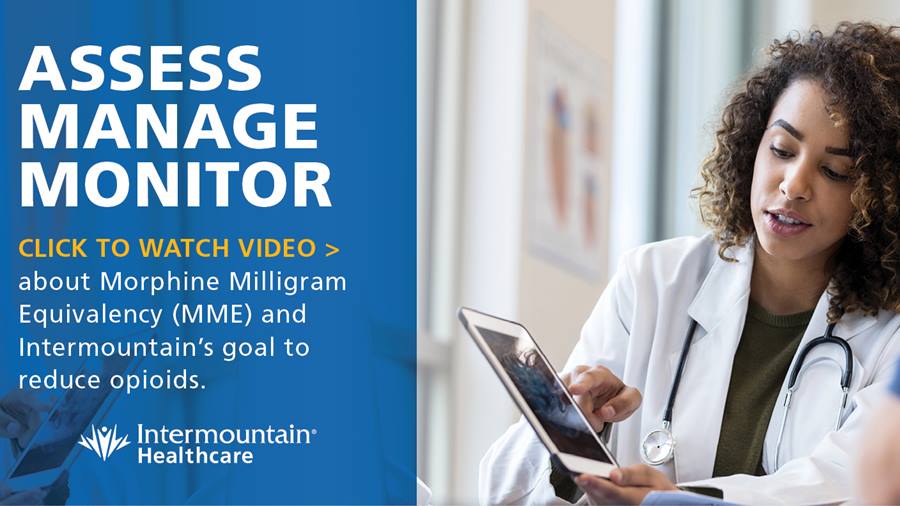Intermountain has developed a new iCentra alert that provides useful information regarding the potency of opioids and patient-specific risks associated with taking them. The alert will give providers information to make it easier for them to consider less-potent alternatives if they’re appropriate for their patients.

Kim Compagni, Pain Management Services executive operations director
Intermountain has launched a new effort to focus on Morphine Milligram Equivalence, or MME, of the drugs they prescribe, according to Kim Compagni, Pain Management Services executive operations director. Knowing the MME of an opioid can help a provider make informed decisions on prescribing opioids or whether other treatment options may prove just as effective.
Kim is working with a team that includes caregivers from across Intermountain who are tasked with addressing the opioid crisis. They’ve created an MME alert in iCentra that will soon be available so that providers can:
- Quickly see what the MME is for a particular opioid.
- Spot harmful medication combinations if an opioid is being prescribed.
- Know if a patient has an existing supply of opioids on-hand.
- Recognize the risks of patient-specific opioid-induced respiratory depression in the next six months.
- See if the patient has been given opioids while visiting the emergency department more than two times in the last 30 days.
- Know if an extended release opioid is being prescribed for a patient who hasn’t been on opioids for the past 30 days.
“As the MME increases, the risks for the patients substantially increases,” Kim says. “Using opioids that have a lower MME is safer for our patients. It doesn't eliminate risk but it helps to keep them safer.”

Cara Camiolo Reddy, MD, senior medical director for Pain Management Services and Rehabilitation Services.
Intermountain providers have prescribed 35 percent fewer opioid tablets since 2017, a drop of more than 6.5 million tablets. Utah still ranks in the top five for opioid-related deaths, so there’s still work to be done.
“As an organization, we need to celebrate our past success and continue to focus on opioids in a more comprehensive way,” Kim says. “Shifting the focus to MME is how we’ll continue to address the opioid epidemic and improve patient safety. Considering the MME is a more comprehensive way of approaching the opioid epidemic.”
Kim says in some cases alternatives such as physical therapy, exercise, over-the-the counter medications, or even applying ice can help patients deal with pain.
“We're not telling providers not to prescribe opioids; we're providing additional tools to give them more information so they can make better-informed decisions,” she says. “We know any time somebody takes an opioid, there are additional risks involved, and we want to minimize those risks and improve patient safety.”
Cara Camiolo Reddy, MD, senior medical director for Pain Management and Rehabilitation Services, answered questions about opioid potency in a recent Intermountain video.
“Not every opioid is created equally,” she says in the video. “Sometimes it’s like comparing apples and oranges. They have different potencies. They have different dosages. But an MME allows us to give an equivalency so that we can compare apples to apples.”
Dr. Camiolo says it will continue to be important to talk with our patients and ask them about their pain and monitor their function as we work to lower MMEs.
“I think we need to celebrate the great work everybody has done in the organization,” Kim says. “It's been a team effort, everybody coming together, focused on a common goal. I think that's been very impressive. While we've had great success in reducing the number of opioid tablets prescribed, we know there’s still work to be done in this area.”


